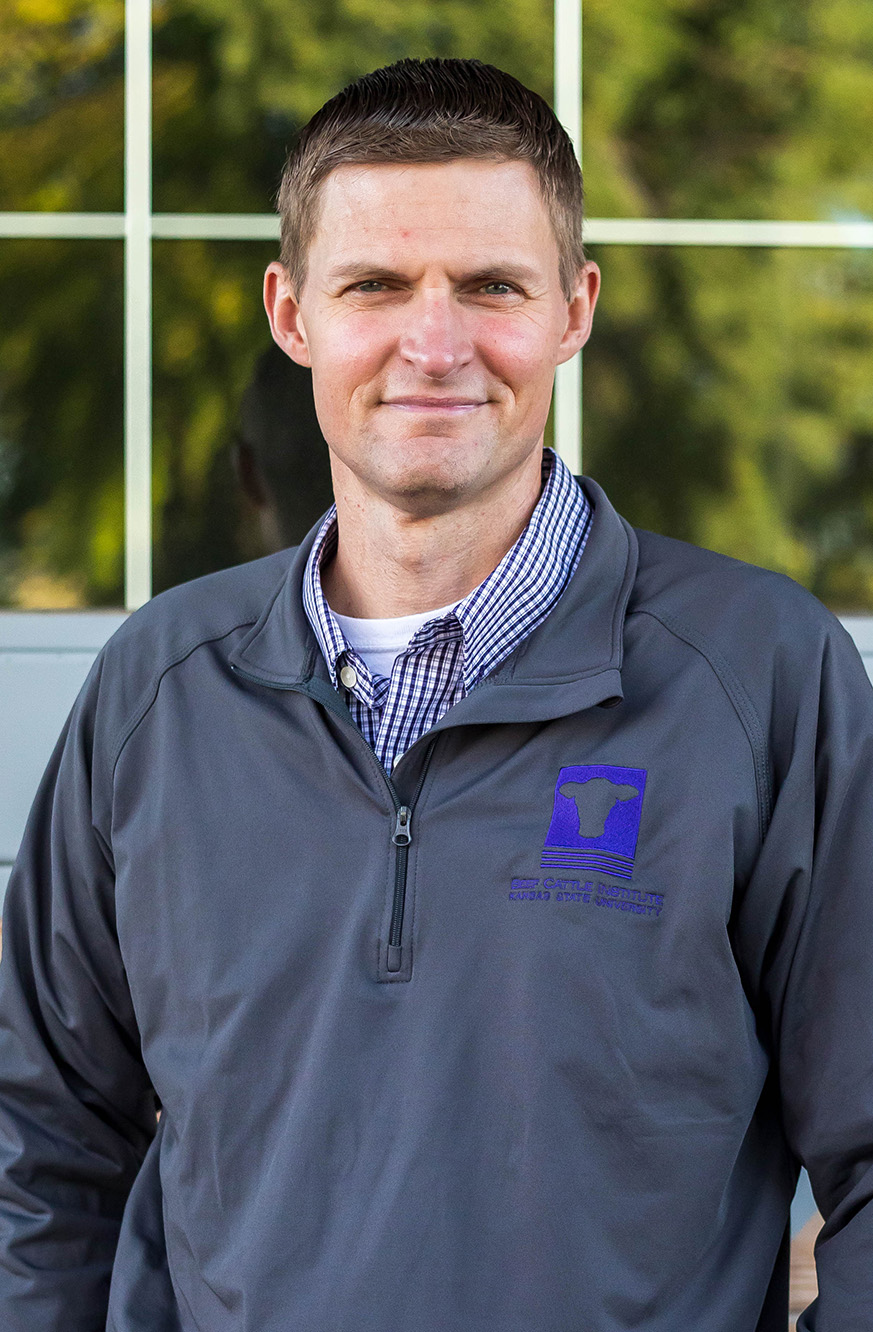K-State research supports grazing education and conservation efforts for the Flint Hills
 By Joe Montgomery
By Joe Montgomery
College of Veterinary Medicine Marketing and Communications
Wednesday, Feb. 12, 2025
 MANHATTAN — There's no place like the tallgrass prairie of Kansas and Oklahoma, and a Kansas State University researcher is working to protect grazing lands in the prairie through education and improved land-management practices.
MANHATTAN — There's no place like the tallgrass prairie of Kansas and Oklahoma, and a Kansas State University researcher is working to protect grazing lands in the prairie through education and improved land-management practices.
Phillip Lancaster, clinical assistant professor in the College of Veterinary Medicine, is conducting a project to develop resources for grazing education and conservation with the help of a $998,195 grant from the USDA Natural Resources Conservation Service.
Lancaster's project, "Addressing natural resource concerns in the tallgrass prairie and beyond through education, technical assistance and peer grazing networks: Building an education template for U.S. grazing lands," is one of only 29 projects funded through the Grazing Land Conservation Initiative. These cooperative agreements are intended to expand access to conservation technical assistance for livestock producers and increase the use of conservation practices on grazing lands.
"The tallgrass prairie region of Kansas and Oklahoma, known as the Flint Hills, is one of the most biologically diverse ecosystems in the world," Lancaster said. "Threats to continued ecological functioning are increasing encroachment of invasive plant species, loss of biodiversity due to habitat fragmentation, soil erosion and loss of soil organic matter."
Lancaster said there has been a large, generational transfer of grazing lands in the tallgrass prairie. Increasing numbers of new and beginning farmers, ranchers and non-operating landowners — including those from several Native American tribal communities, such as the Osage, Potawatomi, and Sac and Fox — means a growing need for education.
"We plan to develop and test an educational program pilot to meet the needs of these farmers and ranchers through the adoption of a three-part strategy that includes educational courses, consultation and technical assistance, and the creation and facilitation of ongoing like-minded peer networks," Lancaster said.
The project involves collaboration with two other partners. Noble Research Institute, Ardmore, Oklahoma, is designing in-depth regenerative management educational materials as well as a soil health monitoring tool. Hy-Plains Feedyard, Montezuma, Kansas, is constructing a producer-led education center in the tallgrass prairie region.
Lancaster and his collaborators will develop three educational courses to be delivered annually for three years, along with encouraged completion of existing Range Academies of the Kansas Grazing Lands Coalition for region-specific information. Additionally, peer consultation, grazing networks and the deployment of conservation monitoring tools will provide technical assistance.
Lancaster has already had ongoing projects evaluating the economic benefits of implementing a written grazing management plan and the conservation and profitability of various grazing cattle management practices. This new project will propel and build on each of these efforts to bring them into a cohesive educational program that will serve as a template for education programs across the U.S.
News tip: Montezuma, Kansas; and Ardmore, Oklahoma.
Written by: Joe Montgomery, 785-532-4193, jmontgom@vet.k-state.edu
Media contact
Division of Communications and Marketing
785-532-2535
media@k-state.edu